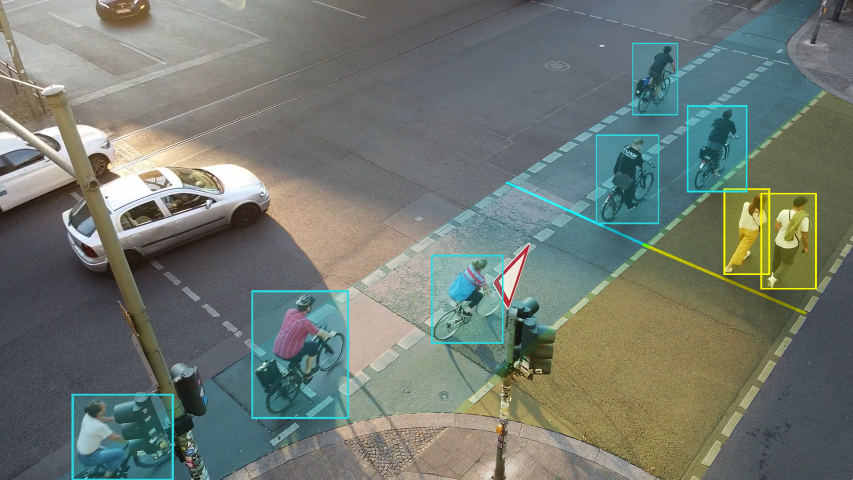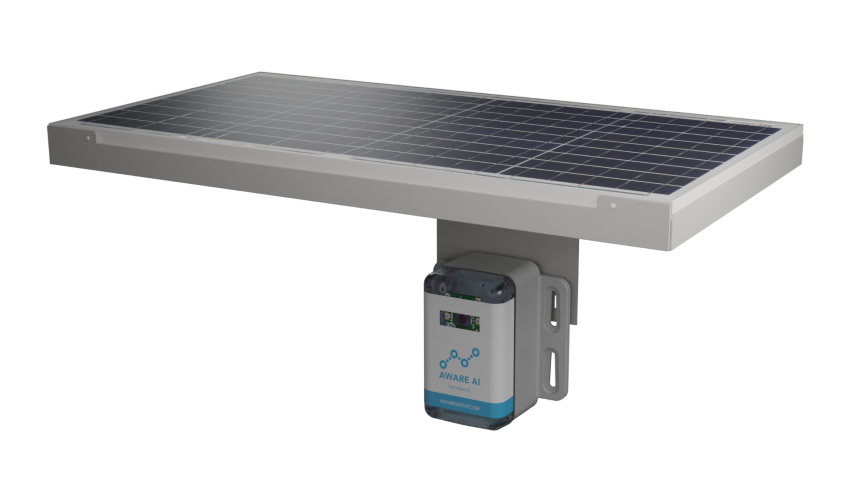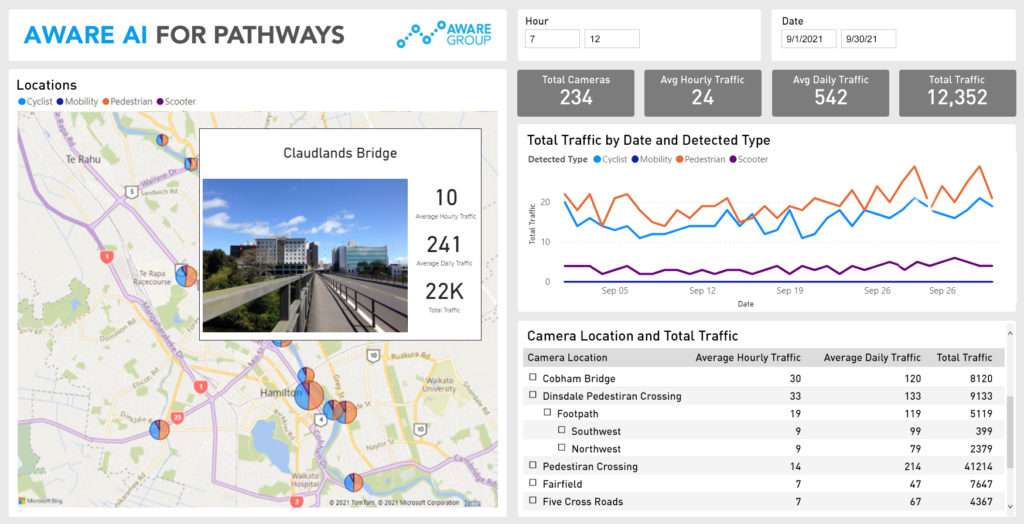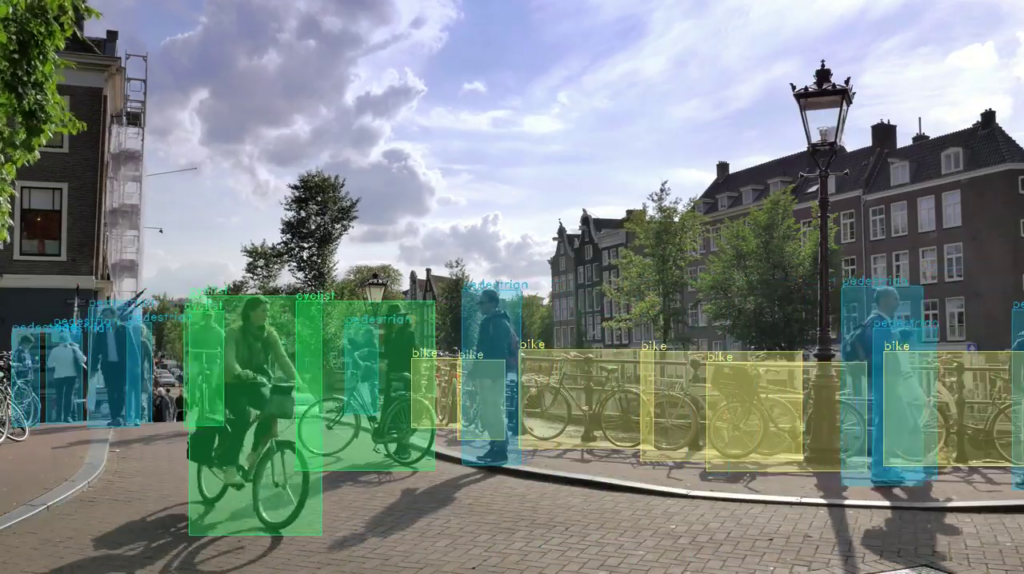Cities and campuses are constantly making decisions regarding the planning, development, zoning, and maintenance of their pathways; decisions that impact public safety, affect operational efficiencies and change how pedestrians and other non-car traffic interact with their environment. To make the right decisions for the city or campus, planners need access to accurate data on their pathways: the frequency people use them, what types of traffic are passing through, the impact of events or disruptions, and so much more.
Existing methods for gathering this information provide sparse and imprecise data, producing results only during short periods and quite often getting amounts or types of traffic wrong. The most common counting methods all have their unique issues that hinder their abilities to do their job well:
- Infrared sensors misclassify some types of traffic due to their inability to see clearly and poor performance in wet conditions.
- Pressure sensors cannot track cyclists and cannot be used for footpaths, making them useless for those who need to manage their pathways.
- Inductive loops systematically misclassify traffic based on the material of vehicles and are entirely unable to track pedestrians.
Along with all of these issues, they all have one more in common: they’re way more expensive than they need to be.
Introducing Aware AI™ for Pathways
Throughout our journey in developing Aware AI™ for Facilities (our solution for managing facility usage), we gained a great deal of knowledge on the use of computer vision across several areas: object detection, facial recognition, crowd counting, and all of the frameworks that go with these. We discovered that computer vision is now at a point where it can produce genuinely remarkable information while matching the effectiveness of a manual audit.
With our newfound understanding of just how far computer vision’s capabilities reach, we pitched many smart-city initiatives to Hamilton City Council. Through working with them, we found that we could produce results that no other existing solution is capable of at a fraction of the cost.

Aware AI™ for Pathways uses a custom computer vision model to turn raw video footage from outdoor cameras into data. It’s able to classify and count people in view of the camera and multiple other types of micromobility traffic, including bicycles, scooters, and motorcycles. Even in poor weather conditions, the devices are over 95% accurate and can identify pedestrians using umbrellas or going in multiple directions.
Pathways Counters count continuously and transmit all of their results into Azure. These are then made available through our interactive, near-real-time dashboard. The dashboard is built to be easily understandable by all customers regardless of previous tech experience and provides valuable insights for you to act upon.
We can also display results via a live stream of data integrated directly into your existing systems or as a queryable datastore. Our goal is to make the data easily accessible and present it in whatever format best meets your unique needs.

The hardware and software solution consists of an 8MP camera, a custom ML hardware platform, and a 3G modem in a weatherproof enclosure with a standard solar panel attached. In building the product, we made sure that a quick and easy installation was guaranteed. The devices are attached to existing poles or buildings with various fixings, and no hardwire connection is necessary – although we can provide units without solar panels if a hardwire installation is preferred.
Why Aware AI™ for Pathways?
A lot can come out of simply monitoring micromobility traffic data. For starters, you’ll gain access to detailed, accurate data on the usage of your pathways. These valuable insights allow you to monitor usage patterns and trends over time; gather footfall data in front of businesses; see what modes of traffic are most common; gather information about typical daily, weekly, and monthly peaks and troughs in order to plan accordingly; and much more.
Aware AI™ for Pathways is simple, innovative, and impactful. It provides more benefits than traditional sensors while making maintenance and use much more manageable, so you can minimise effort while taking advantage of our system. Our goal is to make switching to and using our platform as efficient as possible, introducing various use cases you wouldn’t have access to if using difficult and expensive traditional sensors.
“Though we started out with the aim to count cyclists, what really started to get people excited was the realisation that we could consolidate the features of multiple existing pieces of hardware into a single unit,” said Jeffrey Brown, Solutions Manager and the product lead for Aware AI™ for Pathways. “That’s meant simpler hardware management, and the reduced cost and flexibility means that councils and campuses are able to increase their coverage substantially.”

By proactively monitoring baseline traffic, you can see the impact that any temporary or permanent changes (e.g., roadworks, new routes, or events) have on traffic and can then minimise disruption via reactive adjustment. Aware AI™ for Pathways gives you the necessary information to know how adjustments in your path network affect usage.
Aware AI™ for Pathways informs planning. With access to large amounts of data on the different ways people use your pathways, you can make data-driven decisions on changes you plan to make. Whether it’s changing existing paths, building new ones, or even just planning maintenance for minimal disruption, it’s crucial that when making decisions on construction or changes to an outdoor environment, you have data insight available.
The AI model also supports working with disruptive micromobility initiatives such as Lime. Cities are more and more often trying to improve access to public transport via these initiatives and partnerships but have limited or biased information to base their decisions off. With the Pathways Counters’ ability to identify these technologies or any new ones that pop up, councils can be innovative and safe simultaneously, addressing situations as they arise.

The use cases for Aware AI™ for Pathways are so expansive compared to alternative solutions. When working with Hamilton City Council on distributing our Pathways Counters for the first time, this became very evident. “Our recent use of AI has enabled us to address some of the needs that were once either difficult or expensive to meet,” explained John Kinghorn, Transport Systems Engineer at Hamilton City Council. “I expect we will increasingly rely on AI to provide effective transportation systems, which maximise the benefit to Hamiltonians at a lower cost than traditional methods.”
One thing that separates us from our competitors is how committed we are to ethics in AI. When working on Aware AI™ for Pathways, we built privacy into it by design. Unlike other computer vision solutions, our Pathways Counters do all of their video processing on the device. This means that the footage used for counting is never stored or transmitted anywhere, so there is no risk to privacy for anyone in view of the Counter.
Pathways Counters can also measure multiple zones from a single position, which can effectively replace up to three traditional devices in some situations. For example, they could monitor a footpath, a cycleway, and a pedestrian crossing, all from one camera. This could translate into a savings of up to $27,500 every time traditional hardware comes up for renewal.
How to get started
At about a third to half of the cost of traditional sensors, switching to Aware AI™ for Pathways makes complete sense for cities and campuses and would be hugely beneficial to planners regardless of scale. It is more effective and contains a broader range of features and benefits than any other sensor type, and it’s almost effortless to unlock these benefits for your organisation.
Getting our Pathways Counters distributed and implemented across your city or campus is a fast and straightforward experience. Full rollout of the devices only takes 2-4 weeks, with the cameras able to be easily installed and then individually tested and tuned by our engineers. But before rollout, you also have the option to trial the technology. By testing on up to three locations, you can evaluate how Aware AI™ for Pathways can be incorporated into your operations.
We pride ourselves on always putting the customer first, assisting wherever needed, and doing whatever we can to help our customers meet their goals. So after Aware AI™ for Pathways has launched in your city or campus, we’ll host training sessions for your team so that they can take full advantage of the reports we provide. We’ll also personally support you to ensure that you get the absolute most from the solution.
Visit our Aware AI™ for Pathways webpage or reach out to [email protected] to learn more about what this technology can do for your organisation. Whether through a flexible trial of the system or to request a demo, we are here to introduce you to this powerful technology and help you start better utilising your pathways.

